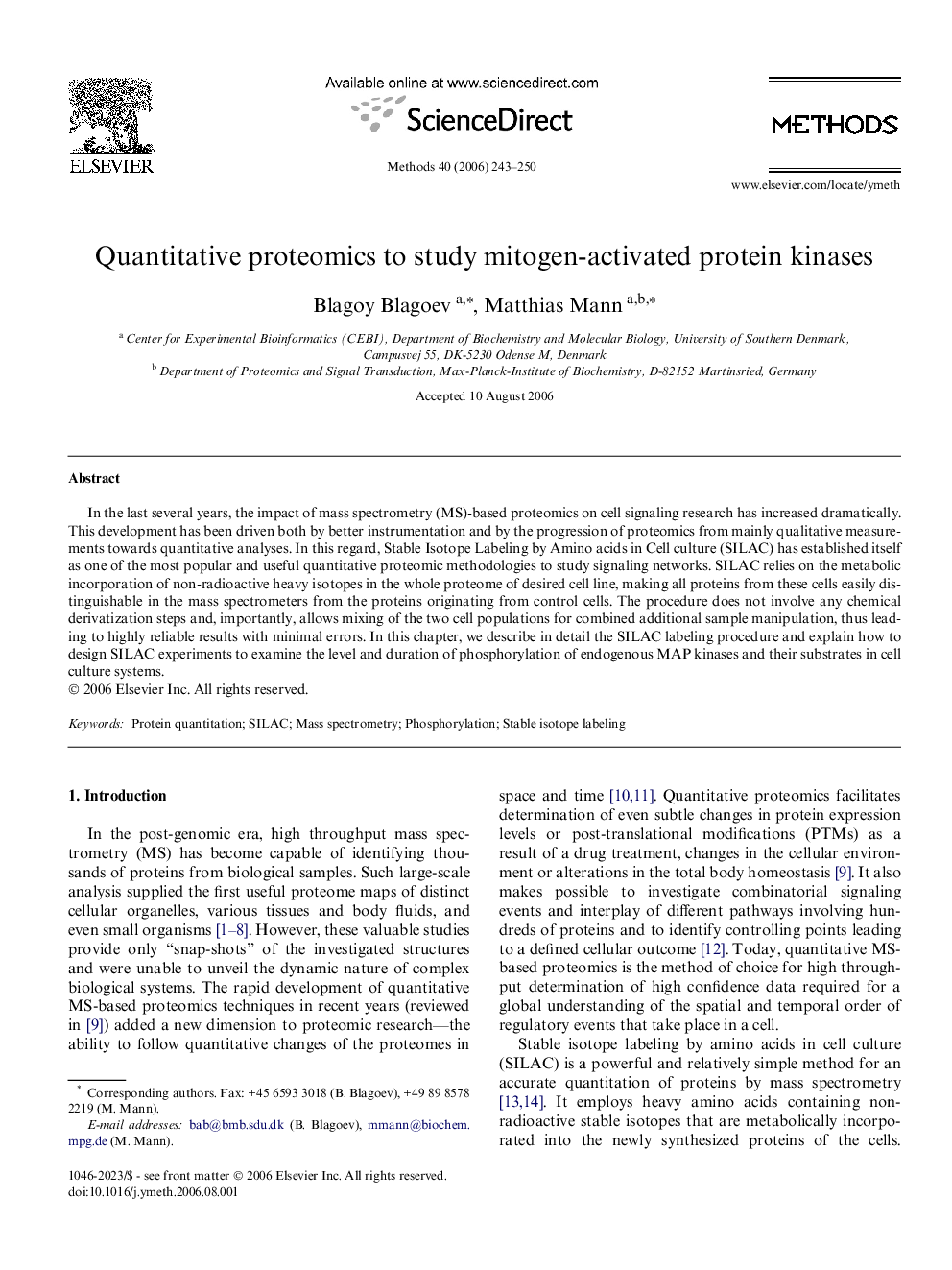| Article ID | Journal | Published Year | Pages | File Type |
|---|---|---|---|---|
| 1994418 | Methods | 2006 | 8 Pages |
In the last several years, the impact of mass spectrometry (MS)-based proteomics on cell signaling research has increased dramatically. This development has been driven both by better instrumentation and by the progression of proteomics from mainly qualitative measurements towards quantitative analyses. In this regard, Stable Isotope Labeling by Amino acids in Cell culture (SILAC) has established itself as one of the most popular and useful quantitative proteomic methodologies to study signaling networks. SILAC relies on the metabolic incorporation of non-radioactive heavy isotopes in the whole proteome of desired cell line, making all proteins from these cells easily distinguishable in the mass spectrometers from the proteins originating from control cells. The procedure does not involve any chemical derivatization steps and, importantly, allows mixing of the two cell populations for combined additional sample manipulation, thus leading to highly reliable results with minimal errors. In this chapter, we describe in detail the SILAC labeling procedure and explain how to design SILAC experiments to examine the level and duration of phosphorylation of endogenous MAP kinases and their substrates in cell culture systems.
